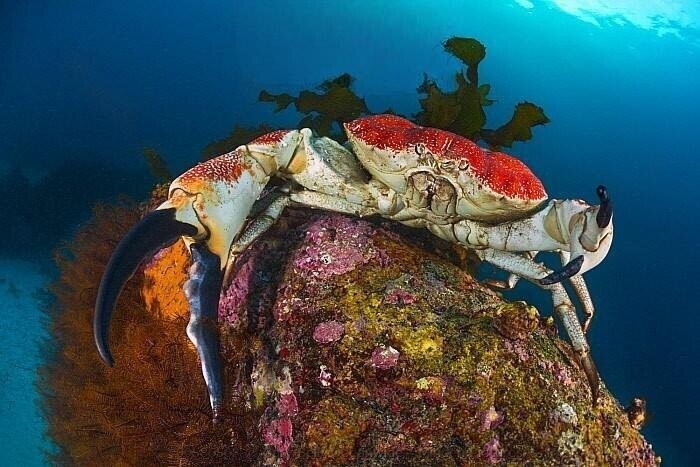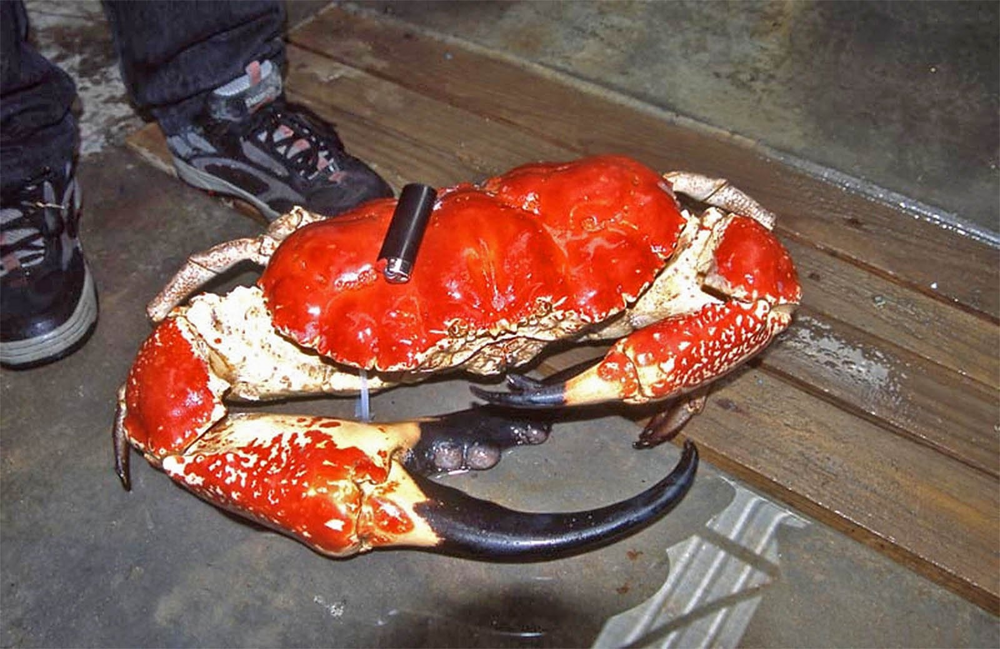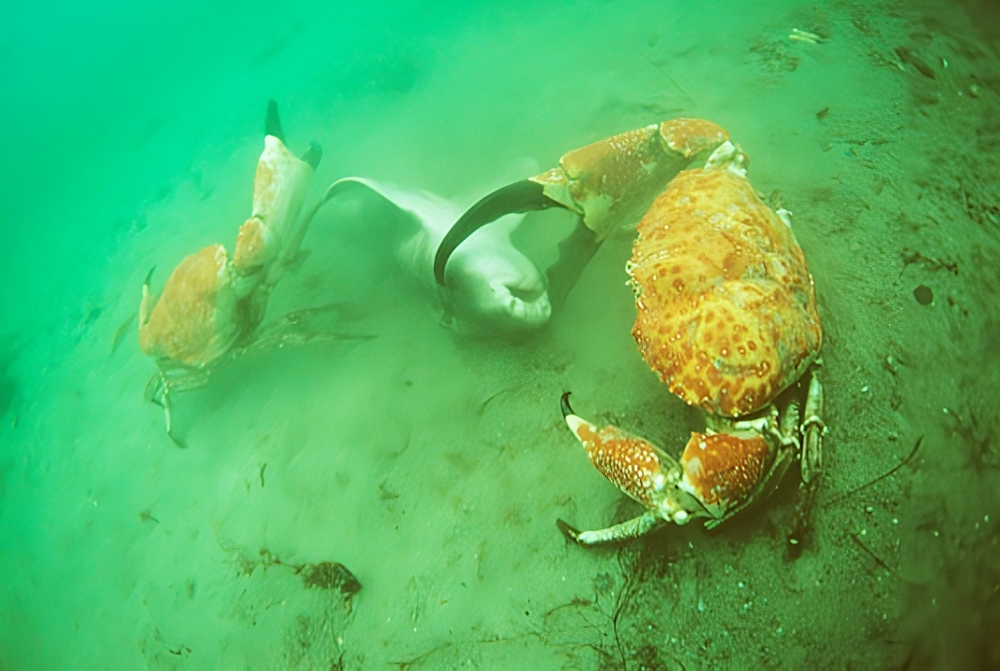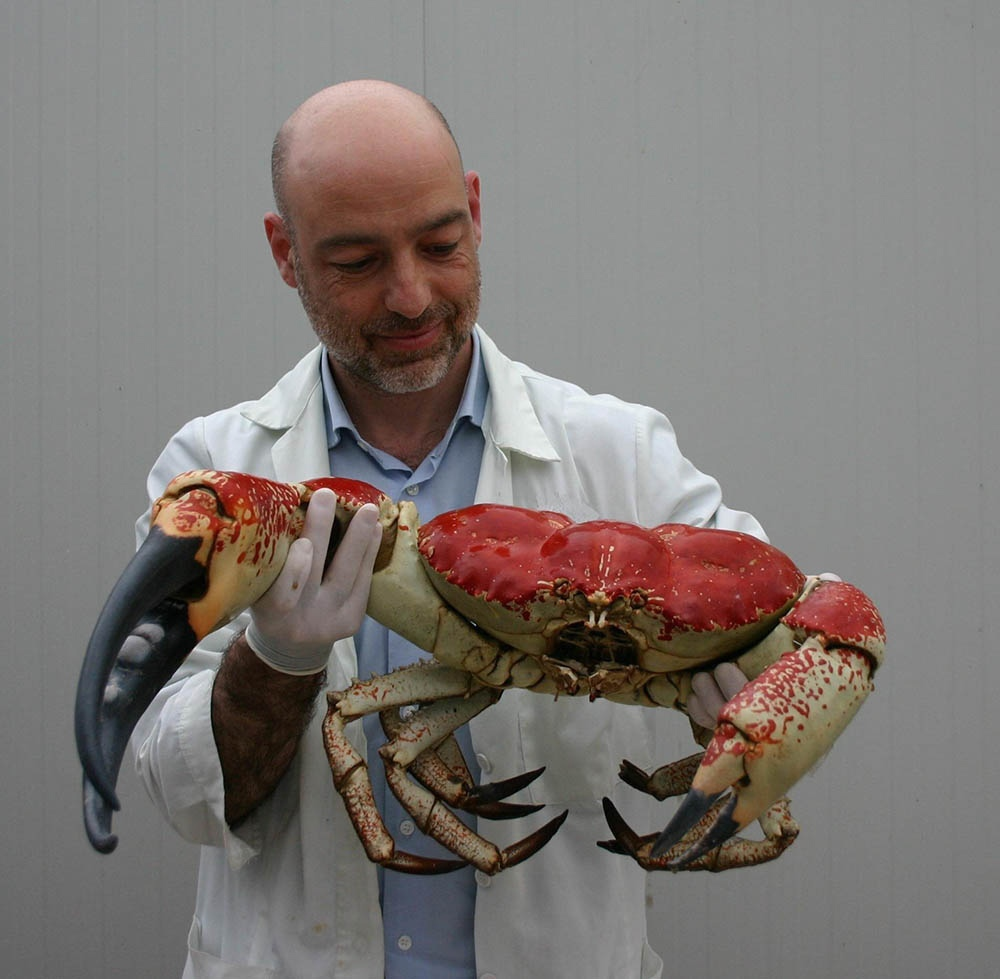The Tasmanian giant crab is one of the largest arthropods in the world and can weigh up to 17 kilograms. This animal inhabits the waters of southern Australia at depths from 20 to 820 meters. 
New Year is just around the corner, and bowls of salads are already getting ready for the holiday season. You can’t just stock up on food for such volumes; you’ll have to get out. But nature has come up with a solution for crab salad lovers - the giant Tasmanian crab!
In size, the arthropod is second only to the fish from the Sea of Japan. The Australian, however, is built much stronger. Just imagine a regular crab, and then enlarge it to the size of a dog, and you get this chthon from the South West Coast of Australia. There will definitely be enough to make a salad for all the guests. And for a more epic effect, the animal grew the limb of a professional arm wrestler - a claw twice the size. True, such an apparatus is present only in males. 
The claw-handed ingredient is found at shallow depths from 20 to 200 meters, without descending from the continental shelf. It’s understandable, it’s cold, dark there and a little tight on provisions. Completely unacceptable conditions for a medalist and record holder! 
But the shallow waters are full of living creatures, and these living creatures die periodically. As soon as the mortal body sinks to the bottom, the relief shell of a Tasmanian crab already looms on the horizon. In addition to carrion, a huge crab can crunch on the same sluggish inhabitants of the bottom - mollusks, starfish and smaller crabs. He will not even spare his brothers. Food is everything that is smaller and weaker than you. 
A Tasmanian crab dinner can be considered a failure if there is no shark in it. As a main dish.
But even such a giant could be dealt with. Tasmanian crabs, in pursuit of food, often end up in human lobster and lobster traps. Fortunately for the crab, homosapiens almost immediately introduced a strict catch limit. Most arthropods are not sent to the holiday table, but fly back to the ocean after unpacking the trap. 
But animals are guaranteed to be trapped by their feelings. The catch is that crabs cannot do amorous things at their own behest - their entire body is covered with chitinous armor. Therefore, the breeding season always occurs with molting every few years, while the shell has not yet had time to get stronger. Moreover, the windows are different for different sexes: 4-5 years for males and 9 years for females. This opportunity cannot be missed, so the crabs have increased their large number of children to the maximum: they release millions of eggs into the water! 
Ahead of the future crabs are two months of hell, helplessness and limp levitation in the water column, until the moment they are able to sink to the bottom. Most will be swallowed here, but the surviving crabs will envy the dead. They will wait for years for the next molt, maneuvering between reef predators and their older brothers. But such is the price of a place on the podium!
Add your comment
You might be interested in:





















